Are you going on a treasure hunt? It's a great idea because over the years, coins, jewels and other items have still not been found. So, in addition to being exciting, this activity can lead to a discovery that will change your life. To optimize the search, you'll need a good metal detector. We've compiled a selection of the best models available today.
Here is our commitment, to make sure that we provide the best user experience and content quality:
You can support us by using our links to make your purchases (at no extra cost to you)! This sometimes earns us a commission which allows us to remain independent. More about us
Our selection
"Are you looking for a high-performance, easy-to-carry metal detector? Dr Ötek, offers you a model that meets these criteria and more."
"If you want to introduce your child to the joys of treasure hunting, choose this model designed by the master in the field: DR Ötek.…"
"Choose a precision tool with a detection depth of 3 m. The Minelab Equinox 800 has 8 user programmable profiles."
"If you're getting into treasure hunting and metal detecting, look for an easy-to-use device with enhanced features like this model from Sunpow."
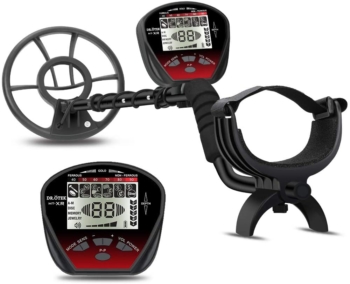
Are you looking for a high-performance, easy-to-carry metal detector? Dr Ötek, offers you a model that meets these criteria and more.
103 £ on AmazonIf you need a metal detector that is suitable for both children and adults, Dr. Ötek offers you this with its MT-XR model. Featuring a 25 cm wide waterproof search coil and can locate buried metal objects at 25 cm depth, a real feat for a device available at this price. It offers 5 enhanced modes including Pinpoint, All Metals, Discrimination, Memory and Jewelry. With these modes, you'll spend less time digging and reduce the amount of uninteresting objects detected.
In order to facilitate your searches, the manufacturer has taken care to equip its device with an LCD screen equipped with a backlight to work in low light conditions. Always in order to optimize your tasks, you will have the possibility to adjust the sensitivity on 5 different levels. With its weight of only 1.72 kg, you can carry it without problems if you go camping or to the beach, the latter being the place to make interesting metal discoveries.
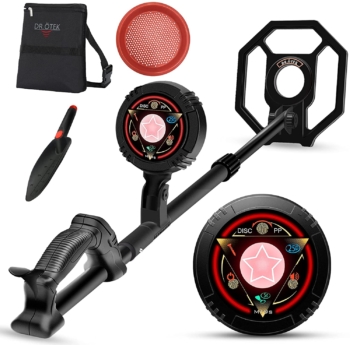
If you want to introduce your child to the joys of treasure hunting, choose this model designed by the master in the field: DR Ötek. This device has everything you need in terms of metal detector.
57,59 £ on AmazonChildren who are interested in treasure hunting will greatly appreciate this device from Dr. Ötek. However, its use is not limited to children. In fact, even adults can use it to find interesting objects. Made of high quality ABS plastic, it offers an IP68 waterproof rating, making it a perfect device for treasure hunts on the beach.
You'll appreciate the presence of Disc and Pinpoint modes and the precision of the touch screen, all of which will help you make the most of your search sessions. Weighing in at just 1.36 kg, this detector is perfect for long search sessions. All in all, it's the perfect device to keep a child or even a teenager or adult busy.
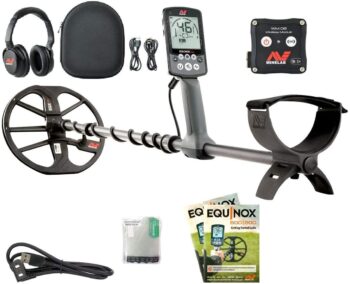
Choose a precision tool with a detection depth of 3 m. The Minelab Equinox 800 has 8 user programmable profiles.
799 £ on AmazonWith the Minelab Equinox 800, you'll get fast and accurate digital identification from -9 to 40. This device has 40 segments of selective discrimination. You will have access to 4 operating modes, including the gold mode operating at high frequency (20 or 40 Hz). This mode will allow you to find the smallest gold nuggets on the ground.
This device has a wireless audio connectivity compatible with audio ultra. It is perfectly waterproof to a depth of 3 meters. Thus, you will be able to leave to the conquest of the beaches, rivers and lakes without fearing a failure of your detector.

If you're getting into treasure hunting and metal detecting, look for an easy-to-use device with enhanced features like this model from Sunpow.
101 £ on AmazonThe Sunpow OT-MD02 is a high performance metal detector with 3 basic search modes. You will appreciate the ALL METAL mode which will considerably improve your detection efficiency. The strength of this device lies in the presence of an improved DSP chip as well as the 10 inch coil, a device that increases search sensitivity and range. If you want to search in wet areas, you should know that this device has an IP68 waterproof rating.
On the practical side, there is an armrest, which is an excellent way of reducing effort and therefore increasing the time spent searching and the user's comfort. You should know that when you buy this device, you will also have a shovel, a transport bag, a user's manual and a helmet. In short, with the Sunpow OT-MD02, you have everything you need to make the most of your metal detecting sessions.
Any specific needs?
The best metal detector in 2021
The best entry-level metal detector
The best high-end metal detector
Your guide :
Rate this buying guide :By rating this buying guide, you are helping us to reward our best writers. Thank you!
| TOP OF THE TOP | CHEAP | TOP OF THE LINE | EXCELLENT | |

In accordance with our commitment, this buying guide does not contain any sponsored products. |
 9/10 |
 7/10 |
 9/10 |
 8/10 |
| OUR SELECTION |
DR.ÖTEK MT-XR
|
SUPERIOR METAL DETECTOR DR.ÖTEK
|
MINELAB Equinox 800
|
Sunpow OT-MD02
|
|
Are you looking for a high-performance, easy-to-carry metal detector? Dr Ötek, offers you a model that meets these criteria and more.
|
If you want to introduce your child to the joys of treasure hunting, choose this model designed by the master in the field: DR Ötek. This device has everything you need in terms of metal detector.
|
Choose a precision tool with a detection depth of 3 m. The Minelab Equinox 800 has 8 user programmable profiles.
|
If you're getting into treasure hunting and metal detecting, look for an easy-to-use device with enhanced features like this model from Sunpow.
|
|
|
Weight
|
1.72 kg
|
1.36 kg
|
1.3 kg
|
3.1 kg
|
|
Dimensions
|
55.6 x 27.4 x 11cm
|
17.8 x 15.2 x 55.9
|
144.02 x 31.19 x 12.6 cm
|
61 x 29.5 x 15 cm
|
|
Waterproofing
|
IP68
|
IP68
|
IP68
|
IP68
|
|
Depth of detection in the ground
|
25 cm
|
21 cm
|
3 m
|
22 cm
|
|
Number of modes
|
5 (Pinpoint, All Metals, Discrimination, Memory and Jewelry).
|
2 ( Disc, PInpoint)
|
4 (Parks, Field, Beach and Gold)
|
3 (All metal, Notch, Disc)
|
Help us improve this table:
Report an error, request the addition of a feature to the table, or suggest another product. Thank you for your kindness!
We spend thousands of hours each year studying the major specialized websites, analyzing products of hundreds of brands and reading user feedback to advise you on the best products.
We are a product review company with a single mission: to simplify your buying decisions. Our research and testing helps millions of people every year find the best products for their personal needs and budget.
To support us you can: use our links to make your purchases (which often earns us a small commission), share our articles on social networks, or recommend our site on your blog. Thanks in advance for your support!

As we have just explained, this is the main criterion for differentiating between metal detectors, as it will determine the detection depth of the machine, and therefore its performance. The higher its value (in the 12-15 kHz range for an entry-level detector, 3 kHz for the simplest), the better the detector will perform (over 20 kHz for the most efficient with a depth of up to 38 cm). Each metal detector has its advantages and disadvantages. For example, a metal detector with higher power will be more powerful, but will be more difficult to use and will require experience so that the device does not go digging at will. A model with a power of 15 kHz, for example, will be suitable for a beginner.
The use you reserve for your device will also be a determining factor in choosing the right product. The latter will be different if you want to entertain yourself or if you want to make it your profession. The professional model will be more powerful, more efficient, and of course will cost more than the one you use during your vacations. Also, your level of detection will not be the same if you are a beginner as if you are an initiate or professional. Your choice will also change depending on the metal you are targeting. Some detectors are more efficient for some metals than for others. It is therefore important to decide what you want to find. The location and material you want to explore will also be an important consideration. If you want to work on the beach, the BEACH mode is essential. The level of pollution of the soil is also to be taken into account. Indeed, polluted soils require a more efficient detector.
The frequency of work of the device will depend on the results of your excavations, because each type is adapted to a specific work. The manufacturers are currently rushing towards the VLF despite the fact that the pulsed induction detector is more efficient on mineral-rich and polluted grounds.
It is the capacity of the device to eliminate less noble metals yet contained in large quantities in the soil. Metal detectors then have more or less elaborate filters to discriminate all the other metals you don't want to find. For example, if you only want to find gold, you can discriminate all the rest. This one is however to be handled with care, because you could miss real treasures to want to fix on a particular target.
According to the use, a metal detector must be able to work on a maximum of different grounds: forest, meadows, ploughings, walls, beach... We speak about the option correction of the effects of grounds which makes it possible to correct the very mineralized grounds and to compensate for the disorders relating to it. Indeed, the effects of soil are interferences that can generate false signals and therefore affect the exploration. The most advanced models are equipped with manual or automatic adjustments to provide stability in the air and when approaching the ground with the disc. The Ground Balance mode is a very popular compensator for mineralization effects, wet soil or black sand. The hot-roch mode eliminates false signals due to highly mineralized stones with metallic particles. In addition, the conductivity of salt water can disturb the metal detector. It is therefore necessary to ensure first of all that the disc used is watertight and then that the BEACH mode is available.
Depending on the type of display, there are detectors with liquid crystal displays (LCD) that display icons or symbols on the screen or detectors with a graphic display that show more or less sophisticated drawings on the probable nature of the finds and their electrical conductivity. The latter, more complete and powerful, is found on the higher-end models. As for the digital detectors, they indicate the nature, size and depth of the object found, while the famous needle detector uses several needles to inform you.
The "all metals" mode allows you to detect all objects of ferrous composition or not. It is efficient when it comes to discovering since it is by digging everything that you find. But there is a risk of finding several undesirable elements. The "discrimination" mode is more effective when you want to target a particular element. The "notch" mode is an additional function that allows you to direct your search towards a single type of metal.
First of all, it is interesting to know the history of the metal detector. The very first such device, very basic, was used by Graham Bell to try to find the bullet left in the body of the American President James Garfield, victim of a bombing in 1881, but without success. Later, doctors used more elaborate equipment during World War I to locate metal debris in the bodies of wounded soldiers. But the real first metal detector, the Metallascope, was invented by Gerhard Fisher in the early 1930s.
A typical metal detector consists of two main parts: the detector disc, and the instrument panel which includes a display screen and possibly a speaker. The detector head itself is composed of two coils, one transmitting, the other receiving. Some metal detectors, however, have two receiving coils.
The operation of a metal detector is based on the phenomenon of electromagnetic induction. When a potentially electrically conductive object is traversed by the magnetic field emitted by the transmitting coil, it generates induced currents, also known as eddy currents. These induced currents are then picked up by the receiving coil, which itself produces a phase shift or frequency shift current, which the device's processor will analyze.
It isthe size of this phase shift that will allow us to determine more or less the characteristics of the object detected. The greater the phase shift, the higher the conductivity of the object, as is the case with gold, silver or copper. On the other hand, if the metal body is not very conductive or is easily magnetized, it will cause a small phase shift, which will not trigger the detection.
To better hear the sounds produced by your metal detector and to identify them more easily, it is advisable to wear appropriate headphones. It will also make your prospecting trips more unobtrusive.
There are many types of metal detectors available today. To help you distinguish between these devices, we present the 5 most common types currently available.
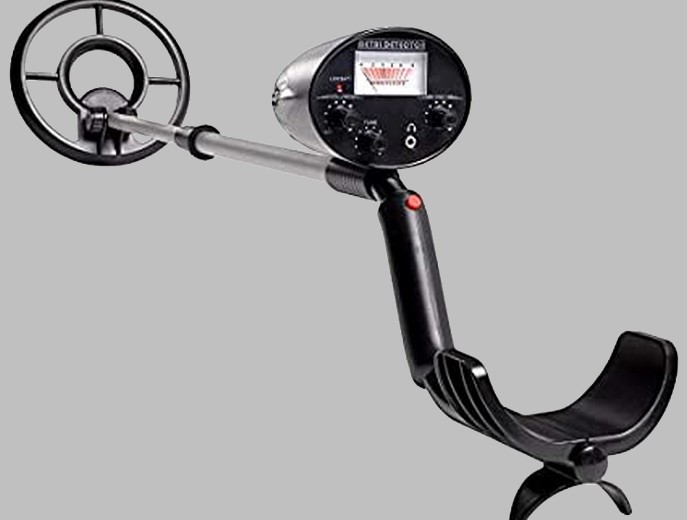
The Very Low Frequency (VLF) metal detector is a model of metal detector that operates with a transmission frequency of less than 20 kHz. It works by the formation of a magnetic field created by two coils incorporated in the head of the detector. The magnetic field reacts to the presence of metals perceived under the detector head.
This is the most common type of detector and the easiest to use in terms of detection. It is therefore possible to find a model to suit all budgets. The VLF metal detector is well suited to amateur explorers. It also ignores objects on the surface and is therefore less sensitive to contaminants. The VLF metal detector is not capable of detecting items at great depths.
This type of detector can be used to find gold coins in Europe or jewelry on the beaches of France, but is not at all suitable for detecting native gold nuggets as in Africa. The products in our selection all belong to this first category. Except for the Minelab Equinox 800 which has the Gold function using a frequency of 40 Hz.
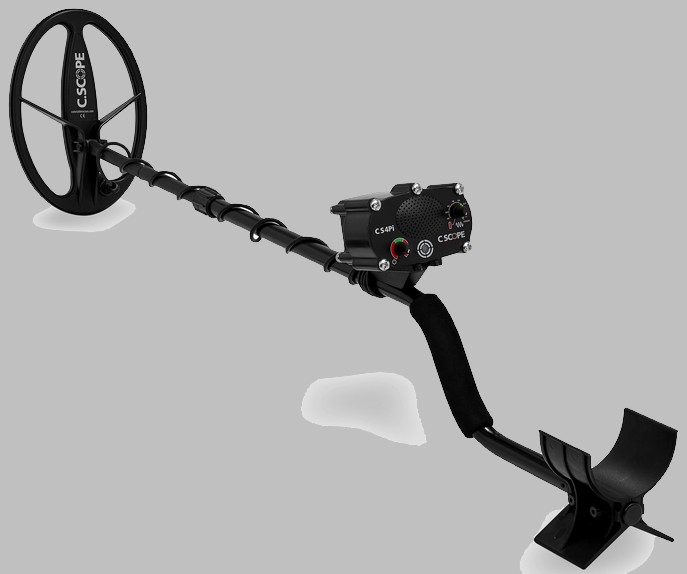
The Pulsed Induction Metal Detector or PI works with a single coil playing both the role of transmitter and receiver in the process of forming the magnetic field. The head of the Pulsed Induction Detector can come in different shapes that will vary the results. The larger the sensing plate, the larger the elements detected tend to be.
Depending on the model chosen, it is able to detect metals of any size up to a depth of 4 m. It is not able to offer a metal discrimination mode and is therefore not suitable for polluted soils which could mislead it. If you want to find native gold nuggets, this type of detector is recommended.

The ground penetrating radar can take various forms, but the most common model consists of a detection head taking the form of a rectangular platform placed on 3 or 4 wheels and whose results are displayed on a screen. This is primarily a device for professionals such as geologists, as the interpretation of the data on the screen requires a certain level of in-depth study. Thanks to its impressive power, the ground penetrating radar can detect elements located at a depth of tens of meters.
It is very powerful and can detect elements at depths of up to 30 meters depending on the size of the metals. It also allows to obtain a 3D visualization of the detected elements. For large objects, a ground radar will be able to probe the earth to more than 8 m.
The reading of the detection results is somewhat complex and can only be done by professionals in the field of geology or mineralogy. Although there are now much lighter portable models, the cost of these devices remains relatively high and makes the purchase of the radar a significant investment.
This type of detector is effective in finding gold bars at depth. It is advisable to use it especially on dry and desert soil.

It is one of the very first models of metal detectors. The beat frequency oscillation detector or BFO works on the principle of measuring frequency beats. Using two oscillators, it is possible to detect a frequency that reacts to the surrounding magnetic field. Although the principle is somewhat similar to that of a VLF detector, the beat frequency detector is less sensitive than its neighbor.
Being the least expensive model on the market, the beat frequency detector is easy to use and does not require extensive knowledge of the subject. Given its rather rudimentary nature, it does not have the functionality of modern devices. It is also much more unstable and does not provide accurate results.
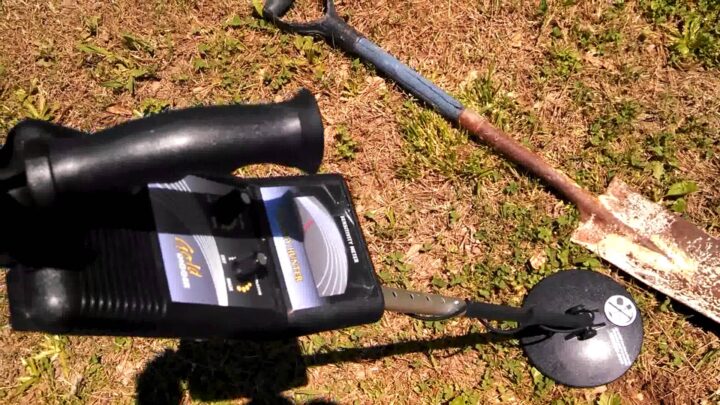
The products in this category are among the best performing on the market, like the Minelab Equinox 800. They work more or less with the same principle as the pulsed induction models, but are much more efficient thanks to their system with advanced technology. For example, the GPX 5 000 and GPX 7 000 models from Minelab are not very sensitive to mineralized soils and offer very accurate results. These models are mainly used by seasoned prospectors for gold detection.
They have many features and can detect noble metals at greater depths without being affected by soil effects. These are very high-end devices with high demand. They are therefore very expensive and sometimes quite difficult to obtain. This is the metal detector reserved for professionals.
The disc guard on your metal detector plays a vital role in ensuring the longevity of the unit. To avoid damage to the disc itself, replace the disc guard as soon as necessary.
The metal detector is a device using the phenomenon of magnetic induction to detect metallic materials. Its detection depth is 2 m maximum. As an integral part of a treasure hunter's kit, this device is also used in the medical, military and archaeological fields. Metal detection is forbidden in all archaeological excavations, including abandoned sites.
More sophisticated, this type of device can also detect metals. It is notably used to carry out soil surveys prior to construction work, to search for tunnels, landmines and unexploded shells, as well as sites suspected of containing mass graves. The RPS is essential during an archaeological excavation or the search for mineral layers. Its detection depth can reach 15 m. This device is expensive, as entry-level models are sold from 2000 euros.
If you want to go on an adventure and search for metals wherever you are, a metal detector will be perfect for you. If, for example, you want to analyze the mineralogical composition of a piece of land for various elements, including metal, you definitely need a Ground Penetrating Radar.
The metal detector is a very useful tool for both professionals and exploration enthusiasts. It must be said that it has many assets:
A vast field of utilities
A metal detector can locate all types of metal objects, ranging from iron to gold, aluminum, copper, silver, or platinum. The device can explore any surface: floors, walls, and even people.
For work or play, you'll always find something to suit your needs. There are metal detectors adapted to each use and according to the needs of the users.
It is thus solicited in many fields: military (mine clearance operations), archaeology (search for ancient objects), or leisure (search for buried objects). A metal detector also reveals its usefulness at the airport, for the detection of dangerous objects.
It is a device adapted to your needs
Whether you are a professional, an initiate or an amateur in the field, metal detectors come in several models that will suit you.
An entry-level model is recommended for an amateur, so that he or she can learn about exploration work. Other simpler models, more entertaining or even playful, will be used by holidaymakers. A more sophisticated and high-end model, with more varied controls, distinct detection modes and a higher level of detection will be recommended to a professional.
A strong discrimination capacity
No metal object can escape a metal detector. To avoid false signals, simply use the device's discrimination mode.
This feature effectively sorts out the different metals. It is possible to find a device that only reacts when detecting precious metals such as gold, silver or aluminium.
A versatile device
The Ground Effect Correction feature makes a metal detector a versatile device. It allows a great adaptability with any constitution of the ground. Professionals swear by this feature. They can use the detector on the beach, where the sand is highly mineralised.
With adjustable sensitivity
It is possible to adjust the sensitivity of a metal detector. This is a necessary manoeuvre at a time when technological progress means that the environment is full of electrical and magnetic signals.
Indeed, the device is not likely to react to the slightest wave, so as not to make exploration a real obstacle course. The comfort of use will then be optimal.
Ease of use
Ease of use is also a term associated with a metal detector. It refers, among other things, to an optimal grip, as well as to intuitive settings.
This type of device is thus within the reach of beginners in prospecting, even if certain models require an initiation beforehand, with a view to complete mastery.
An investment in time
Getting a metal detector is a real investment in time. Manufacturers have taken into account the main parameters associated with exploration. Some devices are shockproof, for example.
They are also waterproof to allow exploration on wet ground or with puddles in places. Intensive and frequent use is therefore unlikely to wear out the device. Nevertheless, a top-of-the-range metal detector offers a much more significant longevity than an entry-level model.
High performance
Thanks to the efficiency of adjustment and the availability of a wide range of options, a metal detector offers great performance. By choosing high-end models, it is possible to accurately identify the composition of the detected metal.
They are also suitable for any type of soil (sand, walls, muddy ground...). Even entry-level devices can accurately locate the location of the target in the ground.
In our opinion, the best brands of metal detectors in 2022 are :
Founded in 1964, the American company Garrett is the world leader in metal detectors. It offers a wide range of devices for individuals and professionals, which are known for their high quality.
Seben is a German manufacturer of advanced equipment such as amateur telescopes and metal detectors. Its high quality products are powerful yet affordable.
Tacklife is an American tool specialist. Founded in 2015, the Tacklife brand is quickly gaining an international reputation for the reliability of its products. Tacklife metal detectors are among the best on the market.
Kkmoon is a Chinese manufacturer of high-tech home accessories and testing equipment. Although they are entry level, Kkmoon metal detectors are among the best for their prices.
Minelab is an Australian company founded in 1985. It specializes in the manufacture of recreational metal detectors as well as demining equipment.
The diagram below will help you to get an idea of the typical prices for each price range (entry-level, mid-range and high-end).
However, more expensive does not necessarily mean better.
We therefore advise you to always consult our ranking before deciding, rather than blindly relying on price ranges.
Wear the appropriate equipment.
Just as it is necessary to have the right tools when preparing to dig a hole, it is also important to choose the right clothing to wear during your "hunt". Wear comfortable, weather-appropriate clothing, knee pads to protect your knees when you have to dig, shoes that help you walk without slipping on the ground, and gloves for your hands so that you don't get any dirtier than necessary or cut yourself when you're picking up dirt.
Do not touch the ground.
Metal detectors require a good pivot to work well, much like the pivot you make to play golf well. Swing your detector slowly from side to side, keeping it as close to the ground as possible - but make sure it doesn't touch it.
Expect to find more trash than treasure.
On the way,
you'll probably find a lot of junk, as well as coins, bottle caps, and trash, but don't give up. Keep looking. That's part of the excitement of hunting with a metal detector.
For the relic hunt, look for a key location in the city.
Visit
the library, talk to local historians, and take a trip to city hall to learn about your town's historic sites, then start looking for relics there
.
Hunt after the rain.
Moist soil is much better for conductivity, and it will be much easier to find treasures hidden deep beneath the surface
.
The best metal detector depends on your needs and budget. Read our buying guide to find out more.
Once you have turned the unit on, simply sweep the floor with the sensor head.
A good metal detector can detect various ferrous and non-ferrous metal objects, such as copper, silver, and even gold.
You can use a metal detector to find potentially valuable buried items, but also to unearth polluting metal objects that you want to remove from your yard.
A good metal detector can detect an object between 20 and 40 cm deep. For deeper searches, a ground penetrating radar is required which is a more powerful device.
Every month we help more than 1 000 000 people buy better and smarter.
Copyright © 2022 - Made with ♥ by buyingbetter.co.uk
Your reviews and buying guides 0% advertising, 100% independent!